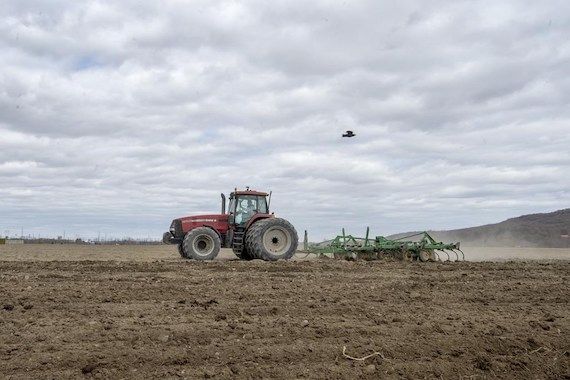
Agricultural land, estimated at 6.3 million hectares, or 5% of Quebec’s area, has emerged as an “opportunity” for researchers. (Photo: The Canadian Press)
Laval – Québec grants funding for the “Demain la forêt” project, initiated notably by the Fringe Cowboys, to plant trees and create natural carbon sinks on farmland. A practice that would allow farmers to obtain carbon credits that they could eventually convert into cash.
The team of scientists and geomatics working with Jerome Dubras, researcher and guitarist at Les Cowboys Fringants, has been searching for spaces to plant trees in order to support the health of ecosystems and combat climate change.
Agricultural land, estimated at 6.3 million hectares, or 5% of Quebec’s area, has emerged as an “opportunity” for researchers.
“If we look a little bit into history, a few decades ago, it was pasture areas for dairy farms and animal farms, but there was a shift in the area, and today we mainly grow grain,” Jerome Dubras explained to The Canadian.
Areas near watercourses where there are steep slopes, cramped places where agricultural machinery cannot spread, soils that are very rocky, forest plots, and areas left fallow where farming is not possible are all places where trees can be planted to capture carbon and increase Biodiversity.
But members of the “Forest of Tomorrow” project don’t just want to plant any kind of tree anywhere, and the $4.5 million in funding will be used precisely by researchers to study the properties and behaviors of different trees and plants on different types of soil and collect data.
The goal is to maximize carbon capture, depending on soil type and vegetation.
Create an “environmental cookbook”
“Our project is a bit like creating a recipe book, because we don’t want to grow trees in monoculture. We would like to say to a farmer who wants to create a carbon sink: Here is the best greening strategy to increase carbon,” explained Jerome Dubras.
A professor in the Department of Natural Sciences at the University of Quebec in Ottawa and a researcher at the Institute of Temperate Forest Sciences want to be able to write an “environmental recipe book” within three years.
Convert carbon dioxide into money
A farmer who grows plants on this land, in places where he can’t grow, will see his efforts to capture carbon rewarded by issuing credits, which he can then sell to companies that want to offset their carbon dioxide emissions.
For the pilot project, Tomorrow the Forest, which is being overseen by Canadian Earth Day, plans to plant 300,000 trees on various farmlands in the province.
The announcement, in which the Minister of the Environment and Combating Climate Change, Benoit Charette, and the Minister of Agriculture, Andre Lamontane, took part, was made in Laval, in the 50th Forest.
This forest of 10,000 trees was established by several organizations, including the Fondation des Cowboys Fringants in 2015, to celebrate the city’s 50th anniversary.
This place, which was once a dump, now houses five forest ecosystems, an array of butterflies, birds, bumblebees, bees and other pollinating insects, according to Team Canopy, the organization that manages this forest.
With regard to the pilot project, Minister Sharett noted that it would make it possible to examine “the potential contribution of various nature-based solutions to the achievement of climate change mitigation and adaptation goals, Quebec, and to identify practices that should be prioritized.”
His colleague Andre Lamontani added that the project “is fully in line with the efforts of the Ministry of Agriculture, Fisheries and Food in combating climate change, in addition to being in line with the Sustainable Agriculture Plan 2020-2030, which aims to double the developed agricultural areas favorable to biodiversity.”
The financial assistance comes from the Green Economy 2030 Plan of Implementation.

“Subtly charming problem solver. Extreme tv enthusiast. Web scholar. Evil beer expert. Music nerd. Food junkie.”


